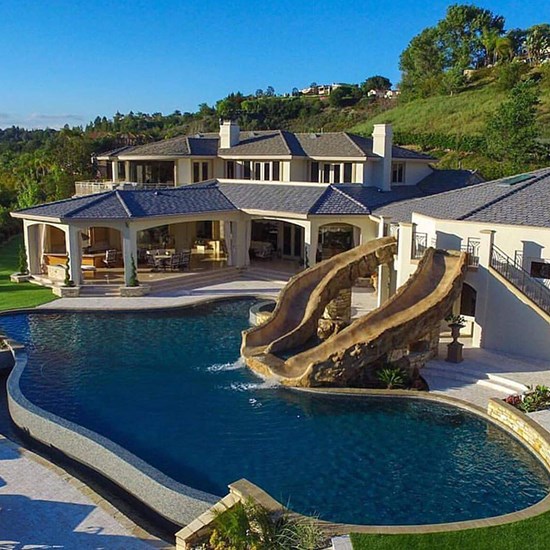Building a swimming pool is an exciting project that can add immense value and enjoyment to your home. However, understanding the costs involved is crucial before diving into the process. Knowing where your money goes can help you make informed decisions and avoid unwanted surprises.
From the initial planning and design stages to the actual construction and materials, various factors contribute to the overall cost. Each step of the process has its own set of expenses that need to be carefully considered. Furthermore, the choice of additional features, such as lighting and heating, can significantly impact your budget.
Once your pool is built, it’s important to factor in ongoing maintenance and operational costs. These include routine cleaning, chemical balancing, and energy costs for running pool equipment. By understanding the complete cost breakdown, you can plan better and ensure your pool remains a source of happiness rather than a financial burden. In this article, we’ll walk you through the key cost elements involved in building and maintaining a pool, ensuring you’re well-prepared for every aspect of this exciting investment.
Initial Planning and Design Costs
The first step in building a swimming pool involves careful planning and design. These initial costs can vary widely depending on the complexity and size of your desired pool. Hiring a professional pool designer or architect can help you create a detailed plan that fits your backyard and meets your specific needs. These services typically include site surveys, custom designs, and permit drawings, which can cost anywhere from $2,000 to $5,000.
In addition to design fees, you will also need to consider the cost of obtaining necessary permits from your local government. Permit costs can range from $200 to $1,000 depending on your location and the scope of your project. Some areas might require additional fees for site inspections or environmental impact reports. It’s crucial to factor these expenses into your budget early on to avoid unexpected delays and costs.
Material and Construction Expenses
Once you have your design and permits in place, the next major cost category is materials and construction. The type of pool you choose significantly impacts this part of the budget. For example, a basic in-ground concrete pool typically costs between $35,000 and $50,000. This includes excavation, concrete shell formation, and basic plumbing and electrical work. If you opt for a vinyl or fiberglass pool, the costs might range between $25,000 and $40,000.
Labor is a key component of construction expenses. Skilled laborers such as electricians, plumbers, and masons are essential for building a high-quality pool. Labor costs can account for 25-50% of the total construction budget. Additionally, you’ll need to budget for materials like pool coping, tile work, and plaster finishes. These elements not only add to the visual appeal of your pool but also affect its longevity and performance. Importantly, investing in quality materials and skilled labor can save you money on repairs and maintenance in the long run.
Additional Features and Their Impact on the Budget
Choosing additional features for your pool can significantly impact your overall budget. If you want to add a heating system, for example, it’s important to factor in both the initial cost and the ongoing expenses associated with it. Installing a gas heater typically costs between $1,500 and $3,000, while a solar heating system can range from $3,000 to $7,000. While solar systems have a higher initial cost, they can save you money on energy bills in the long run.
Water features such as fountains, waterfalls, or LED lighting can enhance the aesthetic appeal of your pool, but they also come with additional costs. A basic waterfall feature can range from $1,000 to $3,000, depending on its complexity. Adding LED lighting can be a bit more affordable, usually costing between $500 and $1,500. Keep in mind that these features also require maintenance, which adds to your pool’s ongoing expenses.
Ongoing Maintenance and Operational Costs
After investing in building a pool, it’s important to consider the ongoing maintenance and operational costs. Regular maintenance tasks like cleaning, balancing chemicals, and running the pool pump and filter are essential to keep your pool in top shape. On average, homeowners can expect to spend around $1,200 to $1,800 annually on maintenance. This includes the cost of chemicals, tools, and occasional professional services.
Energy costs are another key factor. Running a pool pump, heater, and lighting can increase your electricity bill. An efficient pool pump costs around $30 to $50 per month to operate, while a gas heater can add $100 to $300 to your monthly bills during the swimming season. Investing in energy-efficient equipment, like variable-speed pumps and solar heaters, can help reduce these operational costs over time.
Conclusion
Understanding the cost breakdown of building a swimming pool is essential for making informed decisions and ensuring your project stays within budget. From the initial planning and design stages to material selection, construction, and ongoing maintenance, each phase involves specific expenses that need careful consideration. Additional features can enhance your pool but can also significantly increase your overall costs.
A well-maintained pool offers endless enjoyment and adds value to your property. By planning ahead and understanding all associated costs, you can enjoy your new pool without unexpected financial stress. If you’re ready to turn your backyard dream into a reality, contact Majestic Pools today. Our team of swimming pool builder will guide you through every step of the process, ensuring you get the most out of your investment.

